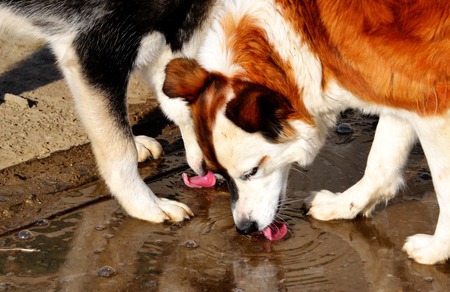Introduction to Foraging and Enrichment Feeding
Foraging and enrichment feeding are more than just buzzwords in the world of small pet care—they are essential practices that support both the mental and physical health of our furry companions. In the wild, small animals such as rabbits, guinea pigs, hamsters, and rats spend a significant portion of their day searching for food, navigating complex environments, and using their senses to solve problems. This natural behavior not only keeps them active but also sharpens their minds. Unfortunately, many pets kept indoors have limited opportunities to engage in these instinctual activities, which can lead to boredom, stress, and even health issues. By introducing foraging opportunities and enrichment feeding into your pet’s daily routine, you mimic their natural environment and encourage them to think, explore, and stay active. This holistic approach helps prevent common problems like obesity and destructive behaviors while fostering curiosity and confidence. Ultimately, foraging and enrichment feeding are vital tools in ensuring your small pets thrive both mentally and physically, leading to happier and healthier lives.
2. The Science Behind Enrichment: Why It Matters
Enrichment feeding and foraging are not just fun activities for small pets—they are essential components for their overall well-being. Numerous studies highlight the importance of providing mental and physical challenges to prevent boredom, stress, and the development of negative behaviors in animals such as rabbits, guinea pigs, hamsters, and rats. According to experts in animal behavior, enrichment mimics natural instincts like searching for food or solving problems, which keeps a pet’s mind sharp and body active.
Research published by the American Veterinary Medical Association (AVMA) shows that small pets given opportunities for enrichment experience lower rates of obesity, anxiety-related behaviors, and even certain health conditions linked to inactivity. Engaging pets in activities such as puzzle feeders, treat-dispensing toys, or simply scattering food around their enclosure encourages movement and curiosity, leading to a healthier lifestyle.
| Benefit | Mental Health Impact | Physical Health Impact |
|---|---|---|
| Foraging Activities | Reduces boredom and stress by offering problem-solving tasks | Promotes exercise and prevents weight gain |
| Puzzle Feeders | Stimulates cognitive function and engagement | Encourages natural feeding behaviors and movement |
| Varied Diet Placement | Keeps pets alert and interested in their environment | Aids digestion through gradual eating and activity |
Expert Opinions on Enrichment Feeding
Veterinarian Insights
The AVMA recommends incorporating daily enrichment activities to foster both physical fitness and mental stimulation. Dr. Emily Thompson, a small animal veterinarian based in California, notes that “enrichment feeding is crucial for preventing stereotypic behaviors like bar biting or over-grooming. These activities give pets a sense of purpose and control over their environment.”
Animal Behaviorist Perspective
Dr. Laura Jameson, a certified animal behaviorist, explains that “pets who are challenged daily show fewer signs of anxiety and depression. By simulating natural foraging patterns, we’re supporting not just their physical needs but their emotional health as well.” This holistic approach is increasingly recognized as best practice among American pet owners.

3. Creative Foraging and Feeding Ideas
Bringing foraging and enrichment feeding into your small pet’s daily routine doesn’t have to be complicated or expensive. In fact, you can craft engaging activities right at home using everyday items. Here are some practical and fun ideas to inspire you:
DIY Foraging Toys from Household Items
You don’t need fancy store-bought toys to keep your pet entertained. Cardboard tubes from toilet paper or paper towels make excellent tunnels and treat dispensers. Simply stuff them with hay, pellets, or small treats, then fold the ends closed for a budget-friendly puzzle. Empty egg cartons can also be filled with food, with lids closed to encourage your pet to dig and discover their meal.
Scatter Feeding for Mental Stimulation
Instead of placing all your pet’s food in a bowl, try scatter feeding by spreading pellets or veggies around their enclosure. This encourages natural foraging behaviors, keeping their minds active as they search for each bite. You can even hide small portions under clean rocks or safe wooden toys for an added challenge.
Rotating Textures and Flavors
Variety is key to enrichment feeding. Change up the types of veggies, herbs, or hay you offer each week to expose your pet to new tastes and smells. Consider offering fresh parsley one day and cilantro the next, or mixing orchard grass with timothy hay for different textures.
Make Mealtime a Game
Transform meals into interactive games by using treat balls or creating simple puzzles with muffin tins covered by tennis balls (for pets that can move them safely). These activities slow down eating and encourage problem-solving skills, supporting both mental and physical health.
By integrating these creative approaches, you’ll not only enrich your small pet’s environment but also strengthen the bond between you and your furry friend through shared play and discovery.
4. Safe Practices and Food Choices
When introducing foraging and enrichment feeding to small pets, safety should always come first. American pet owners can ensure their furry friends enjoy the benefits of enrichment by following some simple guidelines for food selection, frequency, and preparation.
Best Practices for Safety
- Supervise Initial Sessions: Always monitor your pet during new activities to prevent choking or overconsumption.
- Clean Feeding Tools: Wash toys, puzzle feeders, and bowls regularly to prevent bacterial growth.
- Introduce New Foods Gradually: Introduce only one new food at a time to watch for adverse reactions or allergies.
- Avoid Toxic Foods: Never offer foods known to be harmful to small animals (see table below).
Appropriate Foods for Small Pets
| Pet Type | Safe Foods | Toxic Foods to Avoid |
|---|---|---|
| Hamsters & Gerbils | Carrots, broccoli, apples (seedless), oats | Onions, garlic, chocolate, citrus fruits |
| Rabbits & Guinea Pigs | Kale, bell peppers, hay, parsley | Iceberg lettuce, potatoes, avocado, rhubarb |
| Birds (Parakeets, Cockatiels) | Leafy greens, millet spray, unsalted nuts | Caffeine, alcohol, avocado, fruit pits/seeds |
| Mice & Rats | Pumpkin seeds, cooked pasta (plain), cucumber | Citrus fruits (for males), blue cheese, raw beans |
Frequency Guidelines
- Daily Foraging: Offer small amounts of enrichment foods daily alongside regular meals. Too many treats can cause obesity or digestive issues.
- Diversify the Diet: Rotate different foods each week to provide balanced nutrition and stimulate curiosity.
- Observe Portion Control: Treats and foraging items should make up no more than 10-15% of your pet’s daily intake.
Beginner Tips for American Pet Owners
- Start Simple: Use basic DIY puzzle feeders like toilet paper rolls or crumpled paper with hidden treats.
- Research Your Species: Each small pet has unique dietary needs—consult your vet or reputable U.S. sources before introducing new foods.
- Create a Schedule: Consistent feeding times help pets feel secure and prevent begging or overeating.
- Avoid Processed Snacks: Stick to fresh produce and plain grains instead of sugary or salty store-bought treats often found in American supermarkets.
- Keep it Fun: Change up hiding spots and feeder designs to keep your pet interested and mentally engaged.
Your Commitment Matters!
Your careful attention to safe practices ensures that foraging and enrichment feeding remain enjoyable and beneficial for both you and your pet. By making smart food choices and following these guidelines tailored for American households, you set the stage for a healthy and happy companion.
5. Handling Challenges and Ensuring Success
When introducing foraging and enrichment feeding to your small pets, it’s normal to encounter a few bumps along the way. Some pets may be picky eaters or seem uninterested in new activities, while others might create a mess or even attempt to chew on materials that aren’t safe. Don’t worry—these challenges are common, and with patience and a few strategic adjustments, you can help your pet thrive.
Troubleshooting Common Issues
Picky Eaters
If your pet seems hesitant to try new foods or enrichment items, start slow. Introduce one new item at a time alongside their favorite treats or familiar foods. Mix small amounts of the new food into their regular diet and gradually increase it as they become more comfortable. Sometimes, it takes several tries before a pet accepts something unfamiliar—so persistence is key!
Safety Concerns
Always prioritize safety when creating DIY foraging toys or purchasing enrichment items. Avoid materials that could splinter, have sharp edges, or are treated with chemicals. For example, use untreated cardboard, plain paper, or food-grade plastics. Supervise your pet initially to ensure they interact safely with new items and remove anything that becomes damaged.
Encouragement for Pet Owners
Remember that every pet has its own pace and preferences. If your first attempt doesn’t go as planned, don’t get discouraged! Try varying the type of food, hiding spots, or toys you use. Observe what excites your pet most and build on those interests. Enrichment is about making life more fun and engaging for your furry friend, so celebrate the small wins along the way.
Stay Consistent
Consistency is essential for success. Make enrichment feeding part of your daily routine and keep experimenting until you find what works best for both you and your pet. Over time, you’ll notice improvements in their curiosity, activity levels, and overall well-being—all thanks to your dedication and creativity!
6. Building a Routine: Making Enrichment Part of Everyday Life
Integrating foraging and enrichment feeding into your small pet’s daily care doesn’t have to be time-consuming or complicated, even with the demands of a busy American lifestyle. The key is to build simple, repeatable routines that fit seamlessly into your schedule while offering consistent mental and physical stimulation for your pet.
Start Small and Stay Consistent
If you’re new to enrichment feeding, begin by introducing one or two easy activities—like hiding treats in cardboard tubes or scattering food in safe areas of their enclosure. Set aside five minutes each morning or evening, perhaps while making coffee or unwinding after work. Consistency is more important than complexity; pets thrive when enrichment is part of their everyday routine.
Combine With Regular Chores
Maximize efficiency by pairing enrichment tasks with existing chores. For example, refresh foraging toys during cage cleaning, or prep enrichment snacks while packing your own lunch. This habit-stacking approach makes enrichment feel less like an extra job and more like an integrated aspect of pet care.
Use Ready-Made Solutions When Needed
For those especially hectic days, keep a stash of ready-made foraging toys or commercial puzzle feeders on hand. Many U.S. pet stores offer products designed for quick set-up and clean-up, making it easy to maintain enrichment without sacrificing precious time.
Get the Whole Family Involved
Enrichment can become a fun family activity! Assign different tasks to household members—kids can refill treat balls, while adults rotate toys or prepare new hiding spots. This not only lightens the workload but also helps everyone bond with your small pet.
Reflect and Adjust
Regularly observe how your pet responds to different enrichment strategies and adapt as needed. Some pets may prefer certain activities over others, so don’t be afraid to switch things up to keep them engaged.
By making enrichment feeding a natural part of your daily routine, you’ll promote the mental and physical well-being of your small pet—without adding stress to your already busy life. With a little planning and creativity, it’s easy to turn everyday moments into opportunities for joy and discovery.


